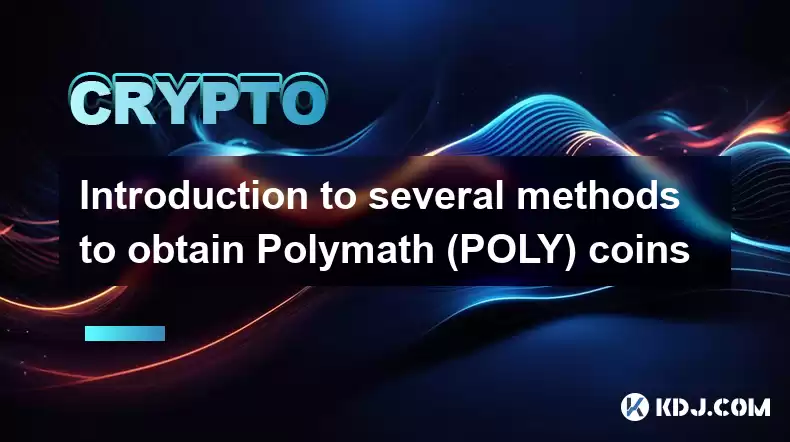-
 Bitcoin
Bitcoin $120100
0.91% -
 Ethereum
Ethereum $4597
8.09% -
 XRP
XRP $3.292
4.12% -
 Tether USDt
Tether USDt $0.9999
-0.01% -
 BNB
BNB $837.7
3.84% -
 Solana
Solana $190.8
8.16% -
 USDC
USDC $0.9998
-0.01% -
 Dogecoin
Dogecoin $0.2365
4.04% -
 TRON
TRON $0.3515
1.90% -
 Cardano
Cardano $0.8502
8.56% -
 Chainlink
Chainlink $23.56
10.38% -
 Hyperliquid
Hyperliquid $44.88
2.69% -
 Stellar
Stellar $0.4538
4.57% -
 Sui
Sui $3.910
5.74% -
 Bitcoin Cash
Bitcoin Cash $624.3
6.95% -
 Hedera
Hedera $0.2626
6.35% -
 Ethena USDe
Ethena USDe $1.001
-0.01% -
 Avalanche
Avalanche $24.81
6.92% -
 Litecoin
Litecoin $129.0
6.38% -
 Toncoin
Toncoin $3.519
3.77% -
 UNUS SED LEO
UNUS SED LEO $9.069
1.07% -
 Shiba Inu
Shiba Inu $0.00001367
4.45% -
 Uniswap
Uniswap $11.55
3.55% -
 Polkadot
Polkadot $4.186
7.13% -
 Ethena
Ethena $0.8169
2.57% -
 Cronos
Cronos $0.1670
0.16% -
 Dai
Dai $0.9999
-0.01% -
 Pepe
Pepe $0.00001223
6.79% -
 Bitget Token
Bitget Token $4.464
1.34% -
 Aave
Aave $317.0
6.94%
Introduction to several methods to obtain Polymath (POLY) coins
To acquire Polymath (POLY) coins, consider purchasing them on cryptocurrency exchanges like Binance or earning them through staking on platforms such as Polymath Network or Binance.
Dec 25, 2024 at 07:13 pm

Key Points:
- Polymath (POLY) is a security token platform that enables the issuance and management of compliant security tokens on the blockchain.
- There are several methods to obtain POLY coins, including purchasing them on cryptocurrency exchanges, earning them through staking, and participating in airdrops.
- Investors should consider the fees, exchange security, and availability of POLY coins on different platforms before choosing an acquisition method.
Methods to Obtain Polymath (POLY) Coins:
1. Purchase on Cryptocurrency Exchanges:
- Register an account on a reputable cryptocurrency exchange that supports POLY trading.
- Verify your identity and deposit funds into your account.
- Locate the POLY trading pair (e.g., POLY/USDT) and place a buy order.
- Once the order is executed, the POLY coins will be credited to your exchange wallet.
Supported Exchanges:
- Binance
- Huobi Global
- OKX
- Uniswap
- Sushiswap
Fees:
- Exchanges typically charge fees for trading activities, including deposit fees, withdrawal fees, and trading commissions.
- Compare fees between different exchanges to find the most cost-effective option.
Security:
- Choose an exchange with strong security measures, such as two-factor authentication and cold storage.
- Monitor your exchange account regularly for any suspicious activity.
Availability:
- Not all exchanges support POLY trading. Check the exchange's website or use a cryptocurrency tracker to confirm availability before signing up.
2. Earn Through Staking:
- Stake your POLY coins on a Proof-of-Stake (PoS) platform or exchange.
- Staking involves locking up your coins for a certain period to help secure the blockchain network.
- In return for staking, you earn rewards in the form of additional POLY coins.
Supported Platforms:
- Polymath Network
- Binance
- Coinbase
- Kraken
- Lido
Rewards:
- The staking rewards rate varies depending on the platform and the amount of POLY coins staked.
- Some platforms offer additional bonuses for long-term staking.
Lock-Up Period:
- When staking POLY coins, you are required to lock them up for a predetermined period.
- The lock-up period can range from a few days to several months.
3. Participate in Airdrops:
- Airdrops are events where cryptocurrency projects distribute free tokens to the community.
- To participate in a POLY airdrop, you may need to complete certain tasks, such as following the project on social media or holding other specific cryptocurrencies.
Finding Airdrops:
- Track airdrop announcements on social media, cryptocurrency forums, and dedicated airdrop aggregators.
- Research the project behind the airdrop to ensure it is legitimate.
Eligibility Requirements:
- Airdrop eligibility criteria vary depending on the project.
- Some airdrops require users to hold a certain number of coins in a specific wallet, while others may have additional criteria.
FAQs:
Q: What is the current price of POLY coins?
A: The current price of POLY coins can be obtained from cryptocurrency exchanges or price trackers. It is subject to market fluctuations and can change over time.
Q: Is it safe to buy POLY coins on decentralized exchanges (DEXs)?
A: While DEXs offer the potential for lower fees, they may have less security than centralized exchanges. Use caution when connecting your wallet to any DEX and ensure you are interacting with a legitimate platform.
Q: What is the minimum amount of POLY coins I need to stake?
A: The minimum staking amount varies depending on the platform. Some platforms may have no minimum, while others may require a certain threshold to be met. Check the platform's documentation for details.
Q: How often are staking rewards paid out?
A: Staking rewards are typically paid out periodically, such as daily, weekly, or monthly. The payout frequency varies depending on the platform.
Q: What happens to my POLY coins if I unstake them before the lock-up period ends?
A: Unstaking POLY coins before the end of the lock-up period may result in a loss of staking rewards or a penalty. Check the platform's terms and conditions for details.
Disclaimer:info@kdj.com
The information provided is not trading advice. kdj.com does not assume any responsibility for any investments made based on the information provided in this article. Cryptocurrencies are highly volatile and it is highly recommended that you invest with caution after thorough research!
If you believe that the content used on this website infringes your copyright, please contact us immediately (info@kdj.com) and we will delete it promptly.
- Unich's OTC Exchange: Surging with $1.2B Volume – What's the Hype?
- 2025-08-13 02:50:11
- MoonBull's Explosive Moves: Your Crypto Whitelist Ticket to Ride!
- 2025-08-13 02:30:11
- MAGACOIN Finance: Don't Miss the Presale Bonus!
- 2025-08-13 02:30:11
- Trump's Crypto Kingdom: $2.4 Billion and Counting
- 2025-08-13 02:50:11
- Solana, LSTs, and SEC Approval: A New Dawn for Crypto?
- 2025-08-13 02:55:12
- Bitcoin's Profit Surge: Unpacking the BTC Value Boom
- 2025-08-13 02:55:12
Related knowledge

How to purchase Aragon (ANT)?
Aug 09,2025 at 11:56pm
Understanding Aragon (ANT) and Its PurposeAragon (ANT) is a decentralized governance token that powers the Aragon Network, a platform built on the Eth...

Where to trade Band Protocol (BAND)?
Aug 10,2025 at 11:36pm
Understanding the Role of Private Keys in Cryptocurrency WalletsIn the world of cryptocurrency, a private key is one of the most critical components o...

What is the most secure way to buy Ocean Protocol (OCEAN)?
Aug 10,2025 at 01:01pm
Understanding Ocean Protocol (OCEAN) and Its EcosystemOcean Protocol (OCEAN) is a decentralized data exchange platform built on blockchain technology,...

How to invest in Kyber Network Crystal v2 (KNC)?
Aug 12,2025 at 05:21pm
Understanding Kyber Network Crystal v2 (KNC)Kyber Network is a decentralized liquidity hub built on the Ethereum blockchain that enables instant token...

Where can I buy UMA (UMA)?
Aug 07,2025 at 06:42pm
Understanding UMA and Its Role in Decentralized FinanceUMA (Universal Market Access) is an Ethereum-based decentralized finance (DeFi) protocol design...

What exchanges offer Gnosis (GNO)?
Aug 12,2025 at 12:42pm
Overview of Gnosis (GNO) and Its Role in the Crypto EcosystemGnosis (GNO) is a decentralized prediction market platform built on the Ethereum blockcha...

How to purchase Aragon (ANT)?
Aug 09,2025 at 11:56pm
Understanding Aragon (ANT) and Its PurposeAragon (ANT) is a decentralized governance token that powers the Aragon Network, a platform built on the Eth...

Where to trade Band Protocol (BAND)?
Aug 10,2025 at 11:36pm
Understanding the Role of Private Keys in Cryptocurrency WalletsIn the world of cryptocurrency, a private key is one of the most critical components o...

What is the most secure way to buy Ocean Protocol (OCEAN)?
Aug 10,2025 at 01:01pm
Understanding Ocean Protocol (OCEAN) and Its EcosystemOcean Protocol (OCEAN) is a decentralized data exchange platform built on blockchain technology,...

How to invest in Kyber Network Crystal v2 (KNC)?
Aug 12,2025 at 05:21pm
Understanding Kyber Network Crystal v2 (KNC)Kyber Network is a decentralized liquidity hub built on the Ethereum blockchain that enables instant token...

Where can I buy UMA (UMA)?
Aug 07,2025 at 06:42pm
Understanding UMA and Its Role in Decentralized FinanceUMA (Universal Market Access) is an Ethereum-based decentralized finance (DeFi) protocol design...

What exchanges offer Gnosis (GNO)?
Aug 12,2025 at 12:42pm
Overview of Gnosis (GNO) and Its Role in the Crypto EcosystemGnosis (GNO) is a decentralized prediction market platform built on the Ethereum blockcha...
See all articles

























































































